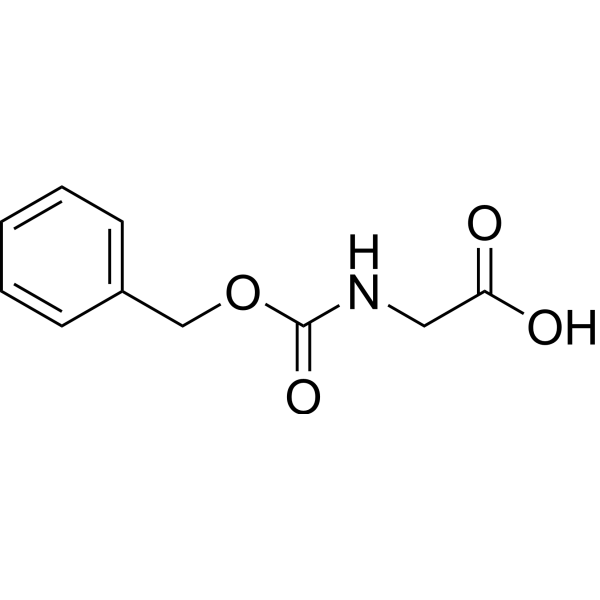
N-Benzyloxycarbonylglycine
CAS No. 1138-80-3
N-Benzyloxycarbonylglycine( Carbobenzoxyglycine | N-Carbobenzoxyglycine )
Catalog No. M28002 CAS No. 1138-80-3
N-benzyloxycarbonylglycine is a drug-lipid conjugates designed to promote brain penetration based on its lipophilicity and resemblance to lipids in biological membranes.
Purity : >98% (HPLC)
 COA
COA
 Datasheet
Datasheet
 HNMR
HNMR
 HPLC
HPLC
 MSDS
MSDS
 Handing Instructions
Handing Instructions
| Size | Price / USD | Stock | Quantity |
| 5MG | 49 | In Stock |


|
| 100MG | Get Quote | In Stock |


|
| 200MG | Get Quote | In Stock |


|
| 500MG | Get Quote | In Stock |


|
| 1G | Get Quote | In Stock |


|
Biological Information
-
Product NameN-Benzyloxycarbonylglycine
-
NoteResearch use only, not for human use.
-
Brief DescriptionN-benzyloxycarbonylglycine is a drug-lipid conjugates designed to promote brain penetration based on its lipophilicity and resemblance to lipids in biological membranes.
-
DescriptionN-benzyloxycarbonylglycine is a drug-lipid conjugates designed to promote brain penetration based on its lipophilicity and resemblance to lipids in biological membranes.
-
In VitroAmino acids and amino acid derivatives have been commercially used as ergogenic supplements. They influence the secretion of anabolic hormones, supply of fuel during exercise, mental performance during stress related tasks and prevent exercise induced muscle damage. They are recognized to be beneficial as ergogenic dietary substances.
-
In Vivo——
-
SynonymsCarbobenzoxyglycine | N-Carbobenzoxyglycine
-
PathwayOthers
-
TargetOther Targets
-
RecptorInfluenza virus|Antiviral
-
Research Area——
-
Indication——
Chemical Information
-
CAS Number1138-80-3
-
Formula Weight209.201
-
Molecular FormulaC10H11NO4
-
Purity>98% (HPLC)
-
SolubilityIn Vitro:?DMSO : 100 mg/mL (478.01 mM)
-
SMILESOC(=O)CNC(=O)OCc1ccccc1
-
Chemical Name——
Shipping & Storage Information
-
Storage(-20℃)
-
ShippingWith Ice Pack
-
Stability≥ 2 years
Reference
1.Wang L, et al. Analyses of serum and urinary metabolites in individuals with peripheral artery disease (PAD) consuming a bean-rich diet: relationships with drug metabolites. Appl Physiol Nutr Metab. 2022 Mar;47(3):243-252.
molnova catalog



related products
-
Theaflavanoside II
The peels of Citrus maxima.
-
Fructo-oligosacchari...
Fructo-oligosaccharide DP8 / GF7 belongs to fructooligosaccharides (FOS) with degree of polymerization (DP=8).?
-
Leonloside D
Leonloside D is a natural product.



 Cart
Cart
 sales@molnova.com
sales@molnova.com


